
It’s time to focus once more on the chocolate in your home with Valentine’s Day quickly approaching. After all, it’s customary to receive chocolate during this time of year that you would not often have on hand, and this can easily turn into an alluring treat for your family’s pets.
It’s crucial to keep in mind, though, how poisonous chocolate may be for dogs. Although chocolate toxicity in dogs or cats may not always result in death, it can be extremely harmful and may also result in long-term health issues.
To learn more about what to watch out for this Valentine’s Day and whenever you have chocolate in your house, read the information below.

Chocolate is toxic to dogs for two reasons:
The first of these is that chocolate contains caffeine. While certain varieties of chocolate have more caffeine than others, all varieties of chocolate do. Caffeine can make your dog’s heart beat too quickly, which could have major negative health effects. The same logic applies to the argument against allowing dogs to consume coffee.
Theobromine is another component of chocolate that can be poisonous to dogs. This substance can act as a diuretic and behaves similarly to caffeine. Your dog may quickly get dehydrated as a result of this, which could cause other issues.
It’s crucial to keep in mind that a chocolate’s toxicity increases with how bitter it tastes. This indicates that white chocolate is less likely to be harmful than dark baking chocolate, which is particularly poisonous. Do not give your dog any chocolate, even if you believe it is not too bitter, as all varieties of chocolate can be toxic and hazardous to dogs and other pets.
Now that you are aware of the reasons why chocolate is harmful to dogs, it is critical to know how to spot the signs of chocolate poisoning in your pet.
Intoxication symptoms in dogs from chocolate include:
The two issues listed above are the first indications that dogs are poisonous to chocolate. In minor situations, dogs may merely vomit or have a few episodes of diarrhea before feeling better.
However, in extreme circumstances, these symptoms may worsen and eventually lead to the other conditions on the list below.
Dogs who have consumed too much theobromine or caffeine may exhibit increased thirst and urine. This is because theobromine and caffeine are both diuretics.
Particularly caffeine may make dogs act agitatedly. Even without the dog consuming much of it, darker chocolates with higher caffeine concentrations may cause this symptom.
A worrisome sign that might cause cardiac arrest is an increased heart rate, especially in older or sicker dogs. It may be advised to take your pet to the emergency vet for monitoring and/or treatment since it can be challenging to monitor your pet’s heart rate at home.
One of the worst signs of dog’s excessive chocolate poisoning is seizures. This may only happen if a dog consumes a significant amount of chocolate, but it occasionally indicates that the toxicity will become fatal without veterinary care.
If your dog exhibits this symptom after consuming chocolate, take him to the clinic right away.
Depending on the signs your dog exhibits after consuming chocolate, you may need to take different actions.
If you are aware that your pet has had chocolate, call the emergency veterinarian as soon as possible. Depending on the type of chocolate consumed and the size of your pet, clinical symptoms and issues can differ greatly. Your pet may occasionally be made to vomit the chocolate up by the vet in an effort to prevent or decrease the possibility of developing clinical symptoms.
Do not wait for symptoms to appear before contacting your veterinarian; once symptoms appear, treatment becomes much more challenging.
Please take your pet to the emergency vet if he exhibits any of the signs on this list and you are certain that he has consumed chocolate. Dehydration can occur quickly as a result of excessive thirst and urine, which can be very dangerous for dogs.
The more quickly you react to your dog’s alarming symptoms, the more probable it is that your dog will be able to fully recover from the situation.
There are numerous ways to protect your dog at home and avoid chocolate toxicity:
If you keep chocolate of any kind in your home, you should always be aware of how you’re storing it and how probable it is that you’re pet will try to get to it. Whether you have brownies, cookies, milk chocolate bars, or cocoa powder in your kitchen or pantry, they should always be kept in a secure location that your pet can’t access.
Avoid leaving chocolate goodies or wrappers lying around by keeping cabinets and pantry doors closed whenever you can.
Additionally, it’s crucial to teach your pet the “leave it” command to stop them from grabbing objects—either food or inedible—that they shouldn’t. Early training of your dog in good manners and obedience can prevent a lot of hassle later on for both you and them.
Children are renowned for giving pets gifts. Get kids in the habit of putting things away in their right places and teach them not to offer your dog any chocolate or other goodies.
Make sure kids develop the habit of immediately closing the fridge, cupboards, and drawers after usage.
Cocoa shell mulch is a rare but potentially harmful source of chocolate poisoning in dogs. The mulch, which is frequently used as a top covering for plants, can entice dogs with its sweet perfume, causing them to consume some of the mulch, which can lead to disease.
Cocoa shell mulch should never be used for landscaping.
With the use of this knowledge, you ought to be able to protect your dogs at Valentine’s Day and any other time of the year when there is chocolate present. Keep any domestic pets under close observation and store chocolate securely out of their reach. You can avoid this potentially deadly issue altogether if you take this action. Call an emergency veterinarian straight once if you know or suspect that your dog has consumed chocolate.
If you would like to learn more about our tips and tricks you can visit our blog page for you can check out our Facebook Page. If you are interested in purchasing one of our Posh Dog Knee Brace you can click our shop page.
When dogs wag their tails and strike objects with them repeatedly, they commonly suffer from this dog tail injury.
Nobody is thrilled if your dog develops what is known as “happy tail syndrome,” though. Dog tail injuries are common, especially in cheerful dogs, but they are challenging to treat.
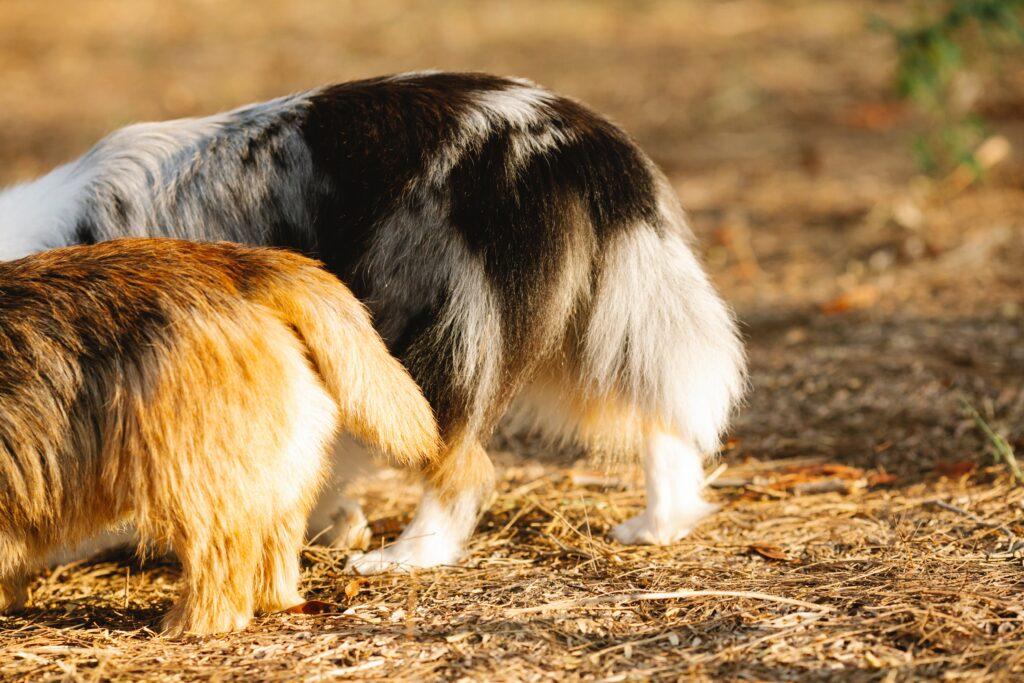
Dogs with long, slender tails that wag vigorously and traumatize the tip of their tail when it strikes a hard surface are said to have “happy tail syndrome.” Every time they bang the tail, they cause more harm to the skin there. It also bleeds. A lot. While the dog is at rest, it might create a clot or scab, but as soon as the dog is up and wagging—or strikes something—the scab falls off, the wound cracks open, and the bleeding resumes. It’s extremely frustrating.
Now what? Finding a means to shield the tail tip from the recurrent damage is a key component of happy tail syndrome treatment. You might be able to encourage it to heal if you can.
The key is creativity. These wild happy tails are difficult to maintain bandaged, and dogs aren’t always ready to do so. People have experimented with a wide variety of items, including pool noodles, toilet paper rolls, chopped water bottles, foam pipe insulating tubes, and syringe casings from your veterinarian. There are commercial kits that use cushioning devices that fit into a bandage on the tail to protect the dog’s tail.
Here are a few pointers: Try to keep it as light as you can. The likelihood that the bandage may go winging off with the wagging increases with its weight. I apply white first-aid tape that extends several inches down the tail before being incorporated into the bandage covering the wound. The goal is to increase the bandage’s “grab” so that it will adhere better. Make sure it’s not too tight! Keep the protective tube’s end open to allow air to flow to the tail tip.
Sadly, even if you are successful in helping your dog’s tail recover, it will probably reoccur again. You could try padding the walls, corners, and other surfaces where he constantly bumping his tail, but that’s difficult to accomplish and not very appealing when visitors are over. Only where there is room can you try to interact with your dog, but that is also impractical.
In Conclusion! Talk to your veterinarian about having the tail amputated if you can’t get it to mend or if you’re sick of returning home to a bloody scene straight out of a horror movie. If you go short enough, the surgery will take care of the traumatized tip and ensure that it never happens again. These dogs occasionally develop adorable tiny bob tails. You won’t get any blood splatter, and they are still free to wag as fiercely as they want.
Let Your Dog Recover With Our Custom Dog Knee Brace!
We’ve Helped Thousands Of Dogs, Now We Want To Help Yours…
The Posh Dog Knee Brace is a 100% custom Dog knee brace, hand made only for your Dog. We make our custom brace with no casting. Our state-of-the-art brace for Dogs is very durable, waterproof, sand proof, and easily adjustable by customers. Our Veterinary Technicians provide personal live video supervision of measuring, and fitting of your Dog ACL brace in the comfort of your own home.
If your dog is in need of a Posh Dog Knee Brace you can order from our Shop page if you would like to join our Facebook Group please click here. Thank you for reading this article for more information you can contact us anytime.
How frequently to feed your dog is one of the most contentious topics in the world of dog owners. Do you fed them breakfast in the morning, then lunch and dinner, or does that run the risk of overfeeding them? Do you fed them all at once or do you wait until the end of the day? No matter your dog’s age, take a look at the finest food options to keep them nourished and healthy.
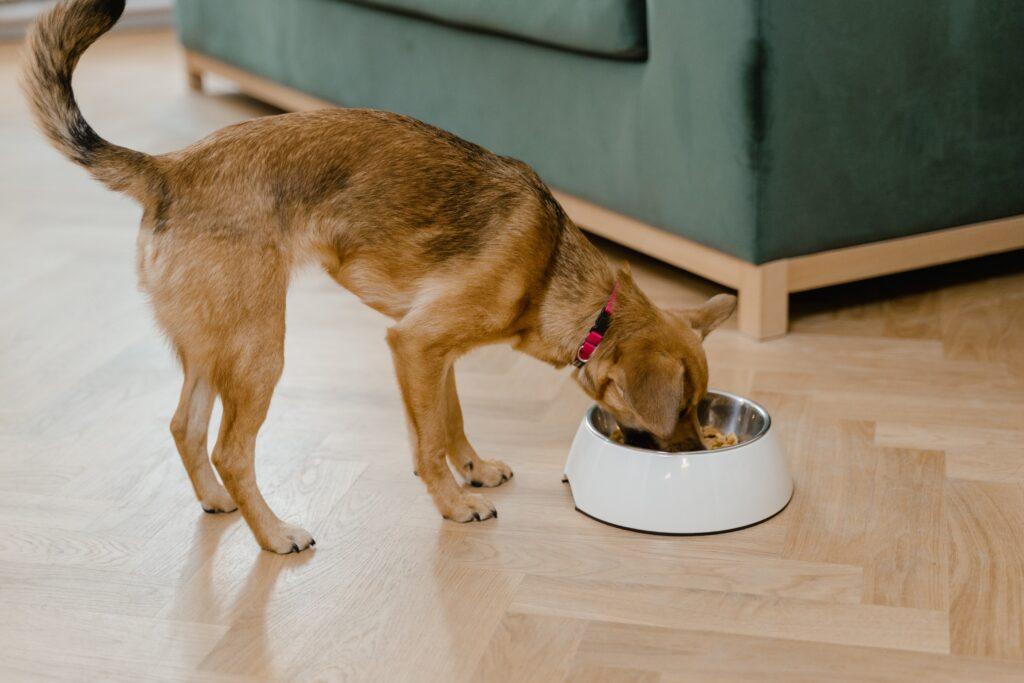
Ideally, you ought to give your dog food twice daily. Most crucial, these two meals need to be served every day at the same time. They will eventually develop a regular schedule for going to the restroom each day. You can also keep an eye out for any health problems. Dogs who are feeling under the weather might not eat as much. As a result, if your dog follows a regular eating schedule, any problems will be obvious.
Ensuring they don’t receive more food than what your veterinarian advises is crucial. For optimal feeding, it’s essential to speak with your veterinarian because some food labels might be deceptive. Remember that less priced dog feeds may not provide your dog with the same nutrients as products that adhere to the Association of American Feed Control Officials (AAFCO) nutritional requirements since they contain fillers like maize and brewers rice.
The feeding method that most dog experts advise against is letting your dog graze on a full bowl of dog food all day. This choice could be the simplest for dog owners with a hectic schedule, but your dog won’t gain anything from it.
When dogs have constant access to food, there is a greater likelihood that they may overeat, which can cause complications as they age like excessive weight gain or health problems like heart disease or diabetes.
Young puppies actually require a number of smaller, distinct meals in order to develop into healthy, powerful animals. As early as three to four weeks old, puppies are ready to begin eating solid foods. At that young age, it can be necessary to feed them up to five times per day. When using dog foods designed specifically for puppies, just keep the portions modest. The right amount of food for your puppy’s age and breed should be determined by your veterinarian.
When your dog reaches the age of six weeks, you can cut back on the number of meals to three or four per day. No matter what breed your dog is, three meals a day should be sufficient for them after eight weeks. Keep in mind that pups that are teething can start eating less for a while. Puppies between the ages of three and six months typically experience this.
Due to inactivity or health problems, dogs’ appetites may decline as they get older. They might not have the same amount of energy to run around as they did when they were younger, thus they won’t require as much food. You might wish to switch them to a senior dog chow that has fewer calories at this stage of their life, or just start feeding them less frequently.
Some older dogs are more vulnerable to a variety of ailments. In order to keep them healthy as they age, they will need to keep an eye on their eating patterns and maintain a healthy weight.
Please keep in mind that dogs have sensitive stomachs when feeding your pet. Frequently changing pet food brands could make them uncomfortable. If you decide to switch, make sure to do so gradually over a few weeks so they have time to adjust to the new flavor and recipe.
Overall, your dog is the finest resource for determining its needs. You can be overfeeding them if they appear to be in wonderful health but aren’t finishing all of their food. They may be deficient in important nutrients if they are constantly hungry.
It’s critical to understand what your dog eats. The quantity, rate, and manner in which they digest their meal will give you a decent idea of their health, level of activity, and general contentment.
If you are interested in any other information you can reach out to us on our contact page or visit our Facebook Page.
Without any negative consequences, milk and other milk-based foods are enjoyed and beneficial by many dogs. If you want to include dairy products in your dog’s diet, stick to these recommendations.
Any food given to dogs may cause conflict, but dairy products cause conflict more frequently than most.
Due to their high levels of protein, calcium, potassium, vitamin D, B vitamins, zinc, and other minerals, milk and dairy products are highly appreciated. Because of this plus the fact that the majority of dogs adore dairy products, milk and other milk-based foods continue to be common additions to canine diets.
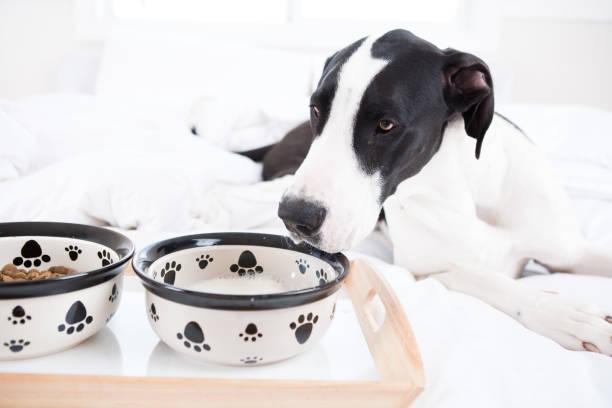
Healthy young puppies may easily digest their mother’s milk, but adult dogs frequently struggle to process lactose, the sugar found naturally in milk. Diarrhea, vomiting, appetite loss, bloating, gas, and other lactose intolerance symptoms are attributed to the lactose in cow’s milk.
The discussion of dairy for dogs up until recently centered on the production and processing of milk. Dairy cattle are frequently raised in cramped quarters nowadays, fed unsuitable diet, and given hormone and antibiotic treatments that leave residues and lower milk quality. People who believe milk is the best nourishment for adult dogs and puppies call for a return to small-scale, ethical, organic, grass-fed dairy farming.
The nutritional value of milk is said to have decreased as a result of pasteurization. Milk is pasteurized to eliminate dangerous bacteria, yeast, and molds; ultra-pasteurization (treatment at higher temperatures) further increases shelf life.
Critics of these practices assert that pasteurization kills the valuable enzymes in milk and changes the proteins in milk. These people recommend raw milk as the cure. Updates, resources, and safety information on raw milk are available from the Campaign for Real Milk (realmilk.org). While laws differ from state to state, raw milk products for dogs are available in a number of states at pet supply stores.
Additionally, homogenizing is criticized. As cream separates from fresh whole milk, it rises to the top. The majority of dairies sell homogenized milk, which has been processed under high pressure to break the cream into small particles and produce a homogenous combination. Some dairies sell whole milk with a layer of cream on top. It is uncommon to homogenize goat’s milk or sheep’s milk because the fat molecules are already tiny enough to produce a consistent texture.
While milk production and processing techniques continue to be important issues, genetics has altered the dairy for dogs discussion. A1 beta-casein, a milk protein, is produced by a mutation that affects over half of America’s dairy cows. Recent studies have suggested a connection between human health issues like allergies, dyspepsia, and possibly autoimmune illnesses and the consumption of A1 milk, which is produced by Holstein cattle, the most productive dairy cows in America.
In contrast, the older, original A2 gene is more prevalent in cows like Guernsey, Jersey, Charolai, Limousin, Norwegian Reds, and Brown Swiss cows. A Systematic Review of the Gastrointestinal Effects of A1 Compared with A2 Beta-Casein, published in the September issue of the journal Advanced Nutrition, is one of more than 200 studies comparing the effects of A1 and A2 milk in the medical literature. According to that study, both rodents and people who consume A1 milk experience gastrointestinal discomfort and have inflammatory response markers.
While there haven’t been any scientific studies comparing A1 and A2 milk’s effects on dogs, anecdotal tales from vets, breeders, and owners describe dogs with dyspepsia brought on by dairy doing better on A2 milk.
In American supermarkets and natural food stores, it is now simple to locate milk that is branded as A2 or A2A2 (which denotes that both parents of the cows who produced the milk have the A2-milk producing genes).
Sheep, goats, bison, camels, donkeys, and yaks are additional animals that can produce A2 milk. Any of these milks can be given as a supplement for young puppies or as a way to help sick or elderly dogs recover from their illnesses.
Dairy products manufactured from milk, particularly cow’s milk, may cause dogs either no issues at all or severe stomach disturbances. The common explanation for complaints is lactose intolerance.
In comparison to whole milk, cottage, Swiss, and cheddar cheese have much lower lactose content per ounce. Most dogs can accept string cheese or young (as opposed to aged) cheddar training rewards better than old hard cheeses. Mycotoxins, which can be poisonous to dogs, are present in ripened cheeses including Roquefort, blue cheeses, and Stilton. These veined, fragrant cheeses are made with roquefortine C, a toxin that can make dogs throw up, have fever, and even have convulsions.
The salt level in feta and various other forms of aged, hard cheese is considerable. Dogs with heart illness, Addison’s disease, advanced kidney disease, and other disorders that call for a low-salt diet might suffer from too much salt. Goat, Swiss, mozzarella, cottage, and ricotta cheeses often have minimal salt content.
The fat content of cheese, which can cause weight gain and, in rare situations, pancreatitis, a serious condition in dogs, is another issue. Mozzarella, cottage cheese, and cheeses marked “low fat” or “reduced fat” are examples of cheeses that are lower in fat. Moderation is your best cheese-feeding advice because eating large amounts of any cheese can lead to issues.
Whey, a leftover substance from producing cheese, has historically been fed to farm animals, including dogs. Whey protein powder is marketed as a sports supplement that can help canine athletes and dogs who are recuperating from illness or injury perform better. Consult your veterinarian and make any necessary dietary changes for your dog if they think they would benefit from a whey supplement. Some retailers and farms sell liquid raw-milk whey; visit getrawmilk.com for more information.
A microbiome is an umbrella word that encompasses colonies of bacteria, viruses, fungus, and other microbes in the body, particularly in the digestive tract.
Beneficial or “friendly” microorganisms emit substances that kill off undesirable bacteria. Colonies of good bacteria starve dangerous microorganisms by denying them resources and space if they are present in sufficient quantities. The immune system’s first line of protection is a healthy microbiome.
Dogs with yeast infections, inflammation, skin problems, allergies, and digestive disorders are frequently advised to consume lactofermented dairy products, which are probiotics that maintain the microbiome.
The most well-known fermented dairy products are yogurt and kefir, both of which have recently gained popularity as dog food. Especially after receiving antibiotic therapy, they support the body’s healthy bacteria by restoring digestion, boosting the immune system, and strengthening the immune system.
In natural food markets and pet supply stores, a variety of yogurt and kefir products, some of which include extra ingredients, are sold. These goods include fresh or frozen goat’s milk and cow’s milk products (check labels). Making your own plain, unflavored, sugar-free yogurt or kefir is the most economical and straightforward option.
Yogurt starters and live milk kefir starter grains that have been dehydrated are widely accessible. Both the fermentation process and active cultures, which continue to digest lactose while the cultured milk is refrigerated, aid in reducing the amount of lactose in milk.
While kefir ferments at ambient temperature, yogurt must be made in a warm, consistent environment, such an electric yogurt maker. Use organic, pasture-raised A2A2 milk or goat’s milk if you can. Kefir and yogurt should be refrigerated or frozen for long-term storage. Search online for “make your own yogurt or kefir” to find how-to videos on YouTube.com and other websites that walk you through the process.
Start introducing these foods to your dog’s diet in tiny doses, such as 1 teaspoon per 20 pounds of body weight. Wait 24 hours before checking for gastrointestinal issues like diarrhea. Add more the next day if your dog likes the taste and appears healthy. According to some experts, you should give your dog up to 2 tablespoons of yogurt or kefir per 20 pounds of body weight each day, but many healthy dogs consume much more. For the best outcomes, keep an eye on your dog’s reaction and consult your veterinarian.
Dogs enjoy frozen dairy treats much like their owners do, but it’s possible that the treats don’t reciprocate. Cow’s milk ice cream is likely to be artificially flavored, rich in fat, high in lactose (and presumably high in A1 milk proteins), and sweetened with sugar. Always check the ingredients; xylitol, which is highly poisonous to dogs, is a component of certain ice cream.
Typically lactose- and xylitol-free, dog-specific ice cream products may nevertheless contain sweeteners like maltodextrin, polydextrose, sorbitol, and other dubious substances.
Making a healthier substitute is as simple as freezing plain yogurt or kefir in popsicle molds, ice cube trays, or freezer pop molds. Before freezing, fresh fruit, peanut butter, or other sugar-free flavorings can be added. Wooden sticks can also be used to hold the dog treats.
It’s no secret that dogs adore dairy products! Your dogs can fall in love with milk-based products that love them back thanks to carefully chosen ingredients. If you are looking for more information you can contact us through our contact form or you can visit our Facebook Page.
Hey guys, today let’s discuss hips and joints, and why it is so important to do your research if adopting a dog from a “breeder”. Unfortunately, just because a puppy has a hefty price tag, does not mean they have had proper health screening. Today we will explain why this simple step can save you literally thousands of dollars, and a lot of heartbreak. So, you see an add for a cute little fluffy golden retriever puppy (maybe a doodle mix), not papered, and for a great price. Good deal, right? You aren’t planning to breed, so in your mind it is meant to be, and the price is half what you have seen other goldens/doodles go for.

Wrong! Backyard breeders, those who are breeding just for the profit, do not do any health screening. Unfortunately, they get away with this quite frequently. These poor puppies end up with so many health related issues. Did you know that golden’s are the poster child for bad hips and joints, due to people not doing proper health checks and background checks, and overbreeding them? Yes, the parents may seem healthy and well taken care of, vet records look good, vaccinated, but how about their joints and eyes?
I can’t tell you how many broken hearts I have seen, because someone brings in a 9 month old puppy that has bilateral hip dysplasia, so bad that there is barely a socket. In these cases, each hip can cost up and above $10,000 each, not to mention the elbows and the knees will most likely be terrible. Now, this adorable 9 month old otherwise healthy puppy is looking at a lifetime of extreme pain, and being completely crippled by age 2 without extreme surgeries.
This is not that uncommon; I just had a case last week. This scenario is completely preventable as well if the breeders had just done their part. Even if you have dog insurance, 20% of $20,000+ in surgeries is still a good chunk of change. Goldens are not the only breeds affected, many large breeds suffer from hip and joint arthritis. Small breeds tend to get luxating patellas and eye issues, which can also be genetic. If the parents have a major joint issue, you can bet the pups may as well.
What can you do as a potential adopter? Ask to see the hip and elbow certifications, prior to visiting a puppy. Do not visit the puppy before asking, you will fall in love with the pup and take him/her home, trust me😊 Make sure that the owners have done either OFA certification of both hips and elbows, or at the very least Pennhip certification. If either of the parents is under 2 years of age, you can bet they did not do the certifications, as they pup needs to be at least 2 years of age to OFA certify the hips, and at least 6-9 months for pennhips.
These are not perfect, however, they are a good indicator of future health concerns. Do not adopt a pup from any breeder with hips that are less than “good”. They go “excellent”, then “good”, “fair”, and of course “poor”. Fair and poor are obviously bad, and should not be ever bred. A first puppy wellness exam is not good enough. They are just checking teeth, weight, and for hernias (also genetic). This will absolutely not tell you if this pup will be healthy still in 9 months.
Now, if you find yourself adopting a puppy or adult dog from a shelter, make sure they have a proper vet examination prior to taking them home. You usually have 3 days to do so. I have had many people take home a dog to find out that the knees both have CCL tears or severe dysplasia. Unfortunately, you can’t insure this with any pet insurance, as it was a previous condition. Make sure that you are in a financial spot to take care of this sweet dog, so he/she is not carted back to the shelter and stressed even more.
We can definitely help you with bracing the CCL tears if needed, however, make sure you know exactly what health issues there are prior to adopting. If you adopt a puppy, I certainly would get insurance right away. Also, there are many good breeders, who have generations upon generations of certified dogs, all health screened and with sound hips. Just make sure you find the right one.
The takeaway here is that it is always a good idea to health screen and find out the history of your potential new family member, prior to adopting. Even if the breeder has a health guarantee, could you honestly take back a 9 month old puppy that your family has bonded with, knowing they will be most likely put down? It breaks my heart to talk to someone that has a very young dog with preventable diseases.
Unfortunately, by purchasing these dogs to ‘save’ them from the breeder is just encouraging that breeder to keep going. The only way to stop the cycle is to stop purchasing puppies from breeders who do not do the proper health screens. If purchasing a small breed, such as a breed that is brachycephalic or a “squished” cute nose, make sure the eyes have been certified. These breeds are very prone to cataract issues, and can go blind at a young age without surgery.
Perhaps instead of going to a breeder, it is better to adopt from the shelter, as most shelter dogs come with a full vet exam, and at least you will know what they have prior to adopting and can prepare. Most shelters have certified technicians and vets on staff, that would be more than happy to explain any health issues, and what you are looking at. If you have any questions, or need advice, always feel free to contact us or visit our Facebook Page for more tips!
Today I want to discuss a popular topic, and that is early spay and neutering, and the correlation with ligament tears. Now, we are not saying that you should not fix your dog, only the reasons that you should wait until the appropriate age (depending on breed) to do so.
For most breeds, especially our giant breeds, we need to wait 12-18 months, to give the hormones a chance to work, and for our bones to finish growing. The Femur and tibia can take up to 14 months to finish growing, and if we take away the hormones too early, then it can cause these bones to grow longer than they should, thus altering the knee angle, and putting too much pressure on the knee, hips, and spine.
In recent studies, it is shown that dogs being fixed too early are 2 times more likely to have a CCL tear, and 3 times more likely to develop Luxating patella issues. Also, in a closed study it was shown that 97% of patients getting hydrotherapy for hip dysplasia had been spayed or neutered before 1 year of age.
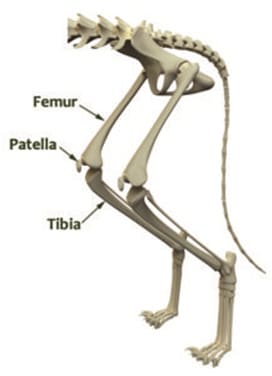
Looking for more information? You can reach out to us through our contact form or Facebook page.
Read reviews check out our Google Reviews online. Click Here
Hi guys, this is Nikki, lead veterinary technician with Posh Dog Knee Braces. Today, let’s discus osteoarthritis (OA) in dogs. Osteoarthritis is the most common form of arthritis in dogs, affecting about 25% of our dog populations. This is a chronic, not acute, disease that is due to loss of joint cartilage (our buffers), thickening of the joint, and bone formation around the joint leading to pain and limping. A lot of our OA patients have other developmental issues or disease, which predisposes them to having OA. This includes Cruciate disease, hip dysplasia, elbow dysplasia, OCD, patella luxation.
Sometimes, there may not be a reason that this occurs, and a patient just develops for no known reason. Some factors that can make this worse include obesity, gender, breed, exercise, and diet.
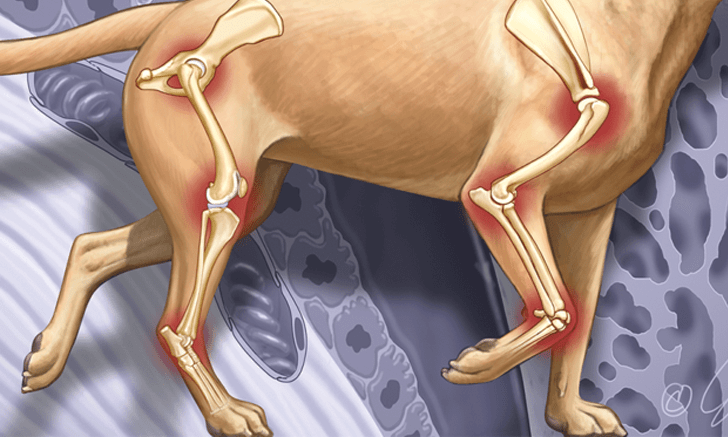
Signs of OA are sometimes reluctance to walk or exercise, acting stiff, limping, bunny hoping while running. Pain on palpation, possible aggression or discomfort is also usually present. They hurt and ache.
This is why it is always good to have an xray with limping patients over 6 years old, to rule out other things that can cause limping such as OA.
Treatment of OA includes weight and diet control, such as feeding Raw diet or diets with better protein, less carbs. Limiting the higher impact activities, such as running or jumping, replace with leash walks and range of motion activities. Physical therapy can really help build back those lost muscles, such as swimming. Laser therapy can also really help.
Supplements with fatty acids, such as fish oils, or green lipped muscle have shown to really improve quality. Adequan injections are one of the only leading products right now specifically formulated to fight OA, and prevent things from getting worse, I strongly recommend. Bracing may also be needed, to help alleviate the pressure on the joint, and act as a support and shock absorber, especially if it was due to CCL disease. Bracing may also help build back lost muscle, and alleviate the pain with walks.
Lastly, some form of anti-inflammatory may be recommended, but there are several natural anti-inflammatories that may be tummy safe, such as CBD oil or white willow bark.
Dogs that have undergone surgery, such as TPLO, have been shown in many studies to have more 77% more OA just 8 weeks post op than before on radiographs. So, if a patient has had TPLO, there is a much higher chance that dog will develop arthritis later on.
Thanks, and please visit poshdogkneebrace.com with any questions, or visit our Facebook page we are happy to help!
Read reviews check out our Google Reviews online. Click Here
We are used to reading that regular walking will keep your dog healthy. How frequently do you walk your dog though? How often should you do this? How much activity do dogs actually require? How can I make the most of a dog walk? Find all of those answers right here!
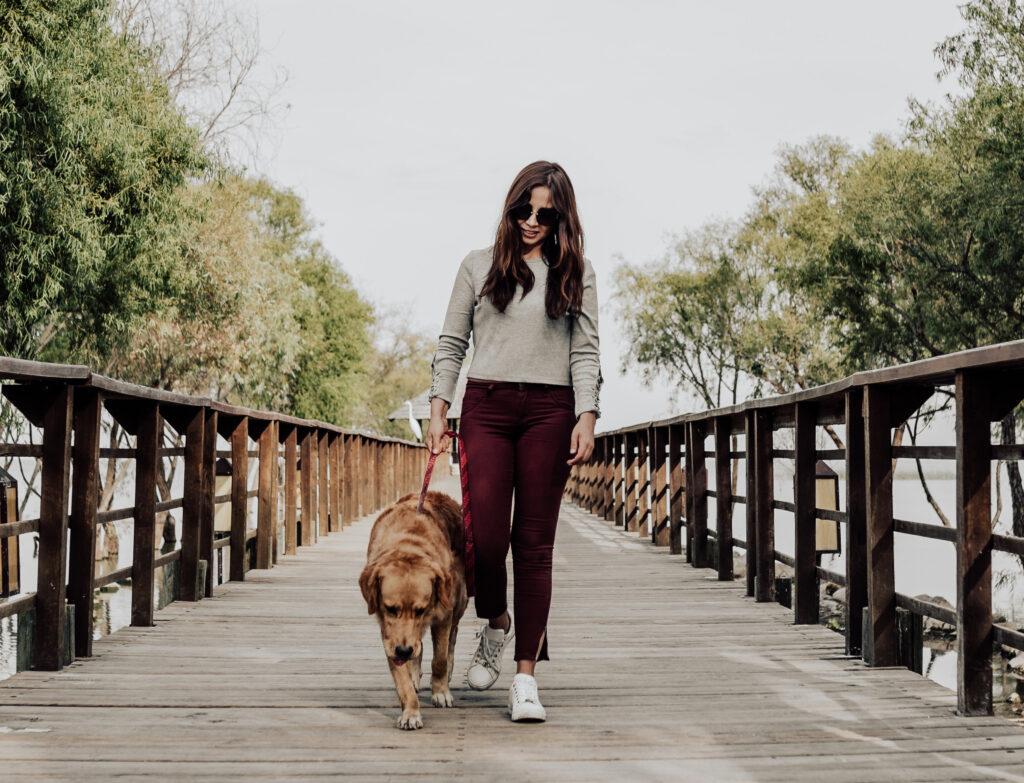
It’s generally advised to take your dog on a walk for at least 15 minutes three to four times every day. However, this may change depending on your dogs:
Smaller dogs might benefit from just one daily stroll, but high-energy dog types will need multiple walks. Is one of those breeds your dog? Are you an active person who wishes to spend more time exercising with your dog? Perhaps you are unsure of the precise amount of exercise your dog need. A trip to the vet is advised in that situation. They will be pleased to offer you practical hints and walking guidance tailored to the particular conditions involving your dog.
Every dog belongs to a distinct breed group, and every breed has unique exercise requirements and restrictions. Giving you a good idea of how much activity to aim for, it’s simple to stay on track after your daily goal has been established.
The amount of sleep your dog receives is as crucial to how much walking you should undertake. After all, a full day of action calls for a restful sleep. Learn your dog’s sleeping patterns, check to make sure they’re getting enough (quality) sleep, and determine if anything seems off. For instance, excessive sleeping could be a warning that you should consult your veterinarian.
If you’re a really active person, these high-energy breeds will fit your lifestyle:
Outdoor activities are the ideal method to develop a relationship with these animals. Your dog will make the trip more enjoyable whether you choose to stroll, hike, or run.
These dog breeds require more exercise than others:
If your dog falls into one of these categories, aim to push them beyond their physical limits while also testing their training and cognitive abilities. The dogs in these categories will find ordinary games dull, so feel free to get inventive!
Did you realize? These dogs need a minimum of 2.5 hours of intense activity per day.
This can readily be translated into at least four daily walks of 20–25 minutes each. Due to their high intelligence, dogs in this category should also be given mental challenges. A minimum of 30 minutes should be set up each day for intelligence game sessions with them. Make sure to outfit these puppies with an activity monitor so you can follow them on all of their outside escapades.
Terrier dogs come out as little, vivacious, strong-willed, and trainable. Although there are only a few dogs in this pack, they nevertheless require a lot of exercise.
Advice: Terriers require at least 1.5 hours of exercise each day.
A reasonable walking routine might involve three 20–25 minute walks each day. For this group, you might want to add some games that need cerebral exercise. It should be difficult enough for 20 minutes a day to keep them active.
Breeds belonging to this group, such as:
Definitely need a challenge in the activities. For them, a minimal amount of daily walking and exercise is one and a half hours. Since these dog breeds enjoy running as well, feel free to begin a running exercise with them as long as you take your time and account for your dog’s age.
It’s important to remember that dogs in this group should take at least three daily walks of at least 30 minutes each, in addition to engaging in cognitive activities.
Chihuahuas and other small dog breeds are typically what we refer to as companion animals today. Avoid subjecting these low-energy breeds to long periods of strenuous activity. Instead, allocate shorter amounts of time for enjoyable activities like games and regular strolls to keep the kids active.
Overly active dogs, such as those with short hair, can have detrimental effects. Since they have less fur, they are more prone to respiratory problems and easy overheating. Take these breeds on quick, uncomplicated strolls. Activity monitor your dog to keep tabs on your tiny dog’s daily exercise to make sure it doesn’t exceed recommended levels.
Watch out: These dog breeds only need two daily, brief walks.
There are several benefits for your dog in frequently walking with you. Some of these explanations have to do with your dog’s health, while others have to do with its training. While following you and moving at your pace while on a leash, your dog might learn discipline.
Are there any considerations you should make when walking your dog? Safety comes first as usual.
Only when you are confident your dog won’t run away and you are in a safe, unpopulated place should you try off-leash dog walks.
Don’t punish your dog if they do manage to escape. Your dog must not identify your return with any sense of wrongdoing or resentment. Keep your dog on a leash at all times if you find that they have a tendency to run away. Make sure to teach your dog the fundamental safety commands as another safety advice. They are not only simple to teach, but they can shield you and your animal companion from risky circumstances.
A dog parent’s life includes taking their dog for walks frequently. A short stroll helps your dog behave better in social situations and strengthens the connection you share with your dog. You may have fun while working to keep your dog healthy if you view dog walks as enjoyable times of the day.
Another way to lessen destructive chewing or scratching is to take your dog for a walk (should this be an issue your dog is facing).
However, the advantages extend beyond your dog! In fact, going outside to spend time with your dog can improve your general wellbeing and level of fitness. Daily walks can reduce your risk of developing diabetes, strengthen your bones, and lower your blood pressure. So, why are you still waiting? Get your dog outside and walking!
For more information you can reach us on our contact page or visit our Facebook page for more tips.
Read reviews check out our Google Reviews online. Click Here
Hey guys, this is Nikki, Lead Veterinary technician with Posh Dog Knee Braces. So, today I would like to talk about feeding raw diets, pros cons and why it has been clinically proven. First off, studies show that puppies that are raw fed starting at 8 weeks old have a significant decrease in their chances of Atopic dermatitis, and much less chance of developing obesity and cholesterol/glucose issues later on, such as diabetes. They also have an increased resistance to roundworms, which is great news. There is also shinier coats, healthy skin, cleaner teeth, more energy, smaller stools, and most important is healthy weight.
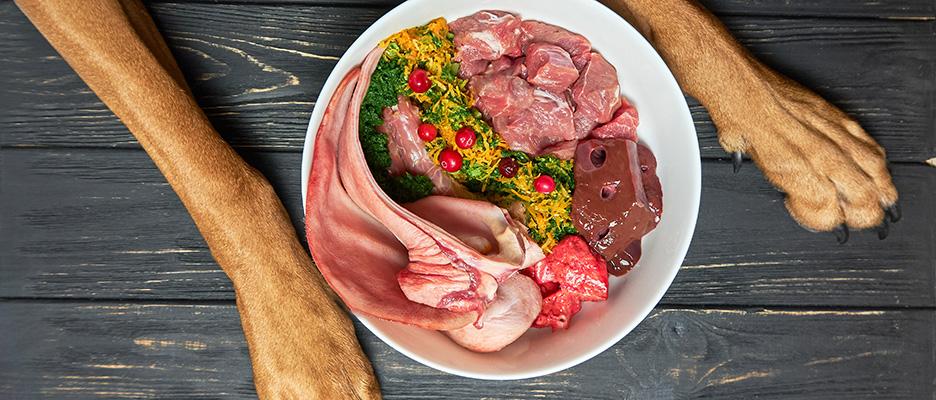
It has been shown to be a great support for joint health, so dogs with CCL tears! Crushed bone provides calcium, phosphorus, glucosamine, chondroitin, collagen, and marrow. This also helps immune systems!
The biggest questions we hearis, Is it safe to feed or dog a raw diet feed? Well, this is a great question. It depends on how you are raw feeding. Some meat may have chemical contaminants, microbial pathogens such as salmonella or e. colli, or there is the issue of feeding whole bones, or unbalanced diet. Bones if not ground properly, or supervised, can cause impactions, or gastric tears, fractures on teeth, etc. So, it is very important if you choose to Raw feed, please do your homework.
What is raw diet food? Typically, this includes muscle meat (not by products), bones whole or ground (I prefer ground), organ meat, raw egg, vegetables, fruit, some probiotics. This can be either via homemade diet, or via pre-made packages. The nice thing about purchasing packaged raw food is that they must provide cleansing methods to prevent contaminations, and grind down any bone material, so it is a bit safer.
There are many companies that can provide frozen raw diets for your pup, just make sure to look at ingredients to ensure they include things that your dog should be eating. One good thing about feeding frozen raw already prepared, is most will have supplements your dog needs already as a part of the diet.
So, whether you feed kibble currently or raw, your dog’s diet is a big decision. We all know that dogs were not meant to eat things like wheat, corn, and soy. Some carbohydrates are required for energy, so there needs to be a good balance. Raw feeding is a huge life change, and can sometimes not be as budget friendly as commercial diets, so that is another thing to consider before making the change. I am not trying to sway you either way, just giving you all the facts on both sides. Let us know if you have any questions, send us a message through our contact form or visit our Facebook page.
Read reviews check out our Google Reviews online. Click Here
Hey guys, this is Nikki, lead veterinary technician with Posh Dog Knee Braces, and today let’s talk about pain in our dogs. I hear so often owners say they don’t feel their dog is in pain, or that they don’t know what to look for. Today I would like to cover things to look for, and how to see those subtle hints your dog is giving you.
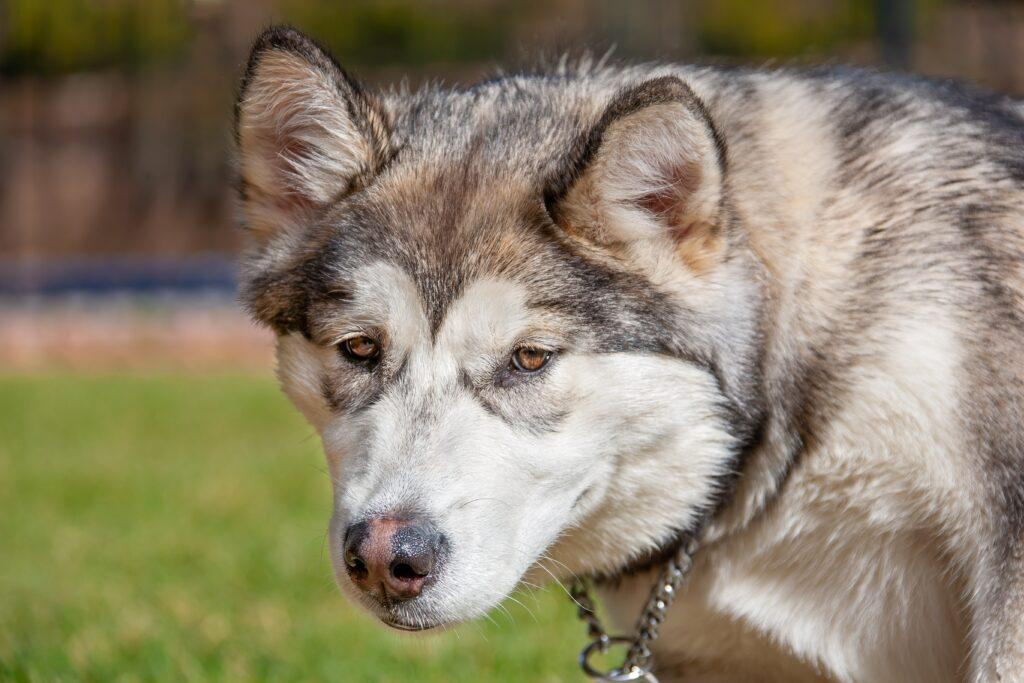
First, does your dog show any signs of panting, licking a certain area or paw/leg, pacing, trouble laying down or standing, chewing an area, legs shaking/body shaking, trouble standing from a laying position, holding a leg up, low whimpering/whining, growling or biting out of character, flinching when touched in an area? If you can answer yes to any of these symptoms, there is a good chance your dog is experiencing discomfort.
Dogs are extremely stoic, which means it is against their nature to show they are hurting outwardly like we would. A child is easy, they will hold the sore area, cry, and tell us what happened or that it hurts them. With our dogs, it can be a bit of a challenge to identify if they are in pain, and when to give the appropriate relief.
One of the most painful injuries to a dog is a CCL injury. This is significant agony, and your dog needs proper relief to get them through the first few weeks. There will be a lot of swelling present, and they may be cranky and sore during this time.
The first 2-3 weeks it is important to keep them on some form of anti-inflammatory. I hear a lot of people learn about nsaids, and immediately take their dog off of them within the first 1-2 weeks of an injury, stating their dog doesn’t look in pain any longer. I understand not wanting nsaids, however, I guarantee your dog is still in pain within the first 3 weeks of this injury. There are other alternatives to nsaids, which I go over in another blog, but that does not mean to withdraw all pain relief.
If suddenly taken off of pain relief, dogs (like people), will experience something called withdrawal. This means that their body is shocked with sudden pain, that has not been effectively treated, and it will be very difficult to get them feeling better without a strong med like a narcotic, something to calm and partially sedate them until pain management is achieved. So, please do not suddenly remove pain relief without having something else to start. If stopping an nsaid, you need to wait at least 24 hours before starting something like willow bark, to make sure the tummy does not get upset, and sometimes waiting for severe pain to stop before doing so might be best.
I always suggest resting 2-3 weeks, even if we are fast and you receive the brace in the first couple weeks of the acute injury, still wait a bit to begin walks. Give your pup time to get through the painful parts, then we can start bracing and PT. They will get better, and feel better, but it is our job as their owner to keep them comfortable. It will make all of our jobs much easier as we begin recovery.
Please let me know if you have any questions about how we can help your dog live a happy and pain-free life, poshdogkneebrace.com, or email me at poshintake1@gmail.com or visit our Facebook page.
Let Your Dog Recover With Our Custom Dog Knee Brace! We’ve Helped Thousands Of Dogs, Now We Want To Help Yours…
Read reviews check out our Google Reviews online. Click Here
Today I would like to discuss diet, and what is best to feed a dog with a ligament injury. I get a lot of questions regarding if you should feed your dog a grain free diet? Answer: yes, you should. So the reason is, gluten and grains such as corn are some of the more inflammatory foods you can feed. We actually want to take down the amount of inflammatory foods that we feed, and not be adding that to the diet. So you want to be looking for gluten and corn free diets if possible.
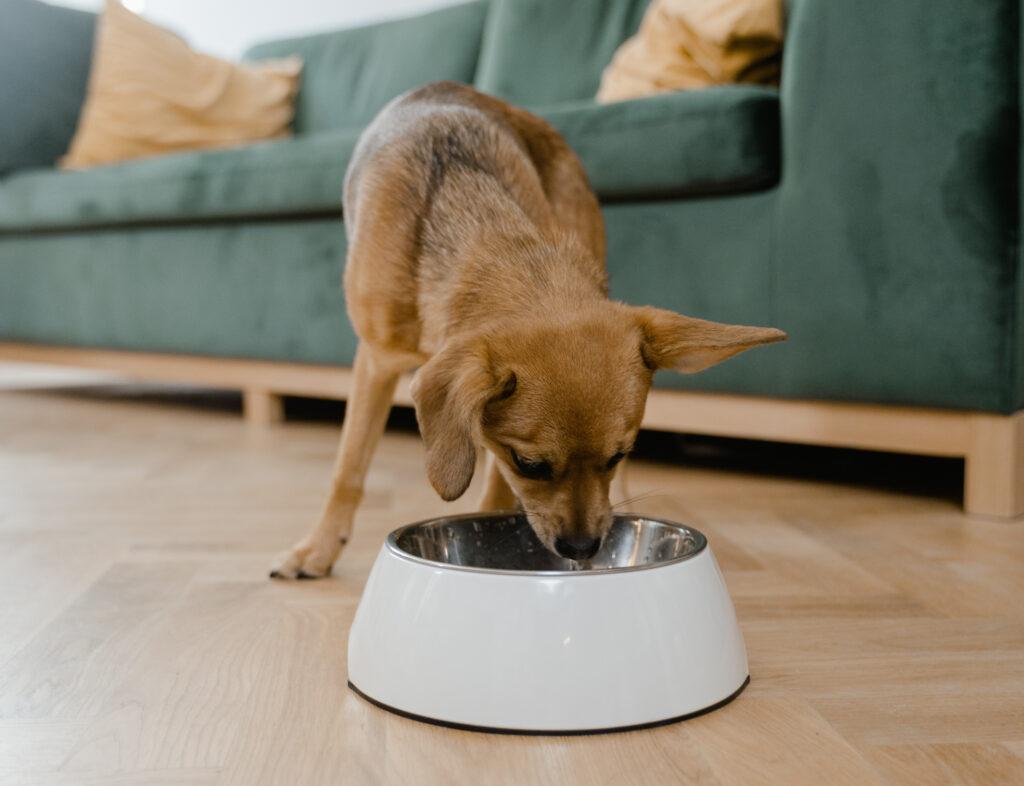
The next thing to go over is protein. We want to find a really high, good quality, protein source diet. Some people like to feed poultry, I prefer beef, salmon, or venison. Also, you really want to make sure to check the label. It should not say “by product of.” If it says by product of, or chicken by product, that is garbage, please do not give that to your dog. Protein is really important for dogs, as it has amino acids, which are muscle building blocks. So, without those quality protein amino acids, your dog can’t form muscle, and really can’t get that strength back that we need during this healing time.
Some healthy additives to supplement diet are sweet potatoes. Sweet potato is a safe source of amino acids as well. I personally feed salmon and sweet potato, because my dogs have a lot of energy. Another thing to add is celery. Celery can remove uric acid, which causes and makes arthritis form. This can make an injury more painful. So, we want to take out that uric acid. Another additive is fish oil. Fish oil has a great source of omega-3 fatty acids. Omega-3’s are helpful in reducing inflammation, and lubricating joints. You can also add coconut oil, in small amounts. This also contains healthy fatty-acids and aids in lubrication of joints.
Thanks, and please let us know if you have any questions! You can contact me through our contact form or visit our Facebook Page.
Nikki, Posh Lead Veterinary Technician
Read reviews check out our Google Reviews online. Click Here
For anyone even considering putting their Dog through this grueling, debilitating, very ineffective, and outrageously expensive surgery – READ THIS!
After reading the FACTS about TPLO surgery, you will start to realize that a torn ACL in Dogs can be effectively treeated with a Dog brace, particularly a custom Dog knee brace. That is 100% of what we make each day; the best Dog ACL brace.
Please SHARE this lifesaving article – (and like our Facebook page, if you want to).and Join Our Dog CCL Group
For five years, we have had many thousands of Dog parents tell us that their vet told them the same false statement that our former vet told us back in 2013, when our then 11 year old Beloved Golden Angel, Pasha, had a complete CCL rupture and severely damaged meniscus in her left hind leg: “Knee braces don’t work! You MUST get the TPLO surgery!!”
Most Dog parents are unaware of all the risks of Dog knee surgey, which, according to the AVMA, has a 35% serious complication rate. About half of the approximate yearly 1,200,000 cruciate surgeries, which produce the veterinarian industry some $2 BILLION each year, are TPLO [tibial plateau leveling osteotomy]
On September 15, 2018, the AVMA published a documented report stating that: “dogs with a history of TPLO were 40 times as likely to develop proximal tibial osteosarcoma as were dogs with no history of TPLO.”
Dog parents, a FOUR times greater chance of getting osteosarcoma a/k/a/bone cancer, after the debilitating, painful and expensive TPLO surgery, is very alarming.
However, FORTY times a greater chance of a post-TPLO Dog who has endured the horrific TPLO procedure, getting bone cancer, at the top of its’ tibia, the closest point to the femur, is beyond frightening. The likelihood of the bone cancer spreading (metastasizing) is greater. Your Dog will then face: 1. amputation, or 2. the very real possibility that you will have to say an agonizing goodbye to your beautiful Dog child, years before you should have to.
If you cannot afford the average price tag of $3,000 to as high as $9,000, for just a TPLO surgery (not including physical therapy / followup checkups / complications / drugs etc), be very grateful.
Since a #PoshDogKneeBrace achieves the same end results as TPLO, TTA, and other cruciate surgeries, with NONE of the complications as surgery, why would you ever do what your vet said, and get surgery? Why not do what humans patients do when they have a similar knee ligament injury, called an ACL tear get: a brace and NO surgery?
A Dog knee brace will NOT cause bone cancer, infections, atrophy, drug complications, crating, and depression in your Dog – surgery surely does though. A brace for Dogs will cause: an immediate recovery process, as we have seen firsthand, in thousands of cases.
Don’t ask yourself twice: “should I put my beloved Dog through TPLO or other CCL surgery? Now that the unacceptable, and massive risks are publicly conceded by the AVMA, maybe you should ask yourself: 40 times.
Lastly, in 2005, the AVMA published the results of a study of the efficacy (effectiveness) of cruciate (knee ligament) surgeries. The report stated that TPLO surgery produced an improvement in only THIRTY FOUR percent of Dogs. Isn’t that wonderful – only ONE in THREE Dogs improve! That means 2 out of 3 do NOT improve after the horrific TPLO surgery. And now the AVMA admits TPLO surgery increases the odds of potentailly lethal bone cancer FORTY TIMES – NOT 40% – FORTY TIMES!!.
Give your beautiful Dog child a BIG, safe hug from all of us at PoshDogKneeBrace.com. We wish you and your Dog the longest life possible, of sharing your perfect love…
|
Post-Op
TPLO Surgery 40 X Chance Osteosarcoma |
PoshDogKneeBrace Frolicking In The Pool – NO Risk |
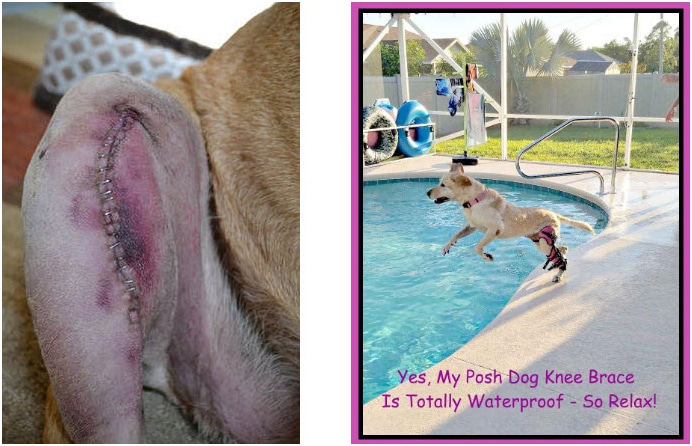
Read reviews check out our Google Reviews online. Click Here
You may need a support sling with helping a Dog with a dog knee injury up and down stairs etc. We make a great Dog knee brace. We did find this great idea for making a sling for your Dog – for about $3.00 and in 5 minutes:
Click Here to Read Full Article

Interested in Ordering a Brace Click Here or need more information you can fill out our contact form.
Read reviews check out our Google Reviews online. Click Here
We are the only Dog knee brace site who offers advice and tips on holistic and homeopathic supplements. We believe in natural healing. We use and recommend the following products. We do not get paid from any of these companies, who do not even know we recommend their products. We are not part of any affiliate program. We have included links for your convenience, but feel free to look into other companies who sell the same products. As with all the content of this website, it is not to be construed as medical advice in any form. If you seek medical advice, consult with a veterinarian.
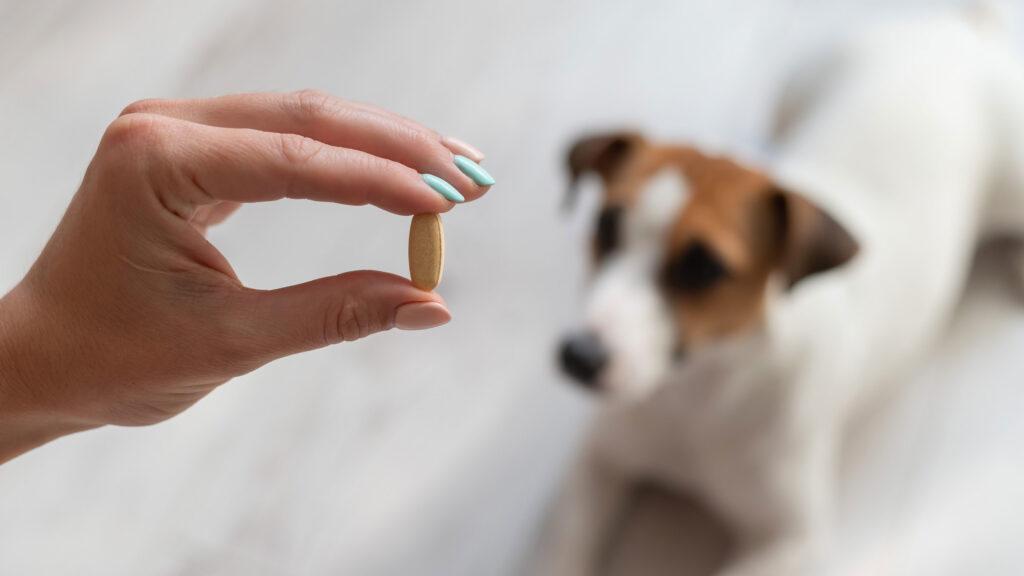
In addition to wearing a Dog Knee Brace for a K9 torn knee ligament, Pasha is given a daily “cocktail” of high quality supplements which support healing, accelerate tissue repair, and help alleviate pain and inflammation in her injured knee. We use a mix of supplements, including Nupro Silver for Dogs with CCL or ACL Injuries. Nupro Silver is a fabulous, high quality nutritional complex supplement which contains glucosamine, kelp, shark cartilage, MSM and other ingredients which can help your Dog recover from a ligament injury along with a Dog stifle brace, exercise, and conservative management.
You can get Nupro Silver online.
Ever since Pasha suffered a complete rupture of the Cranial Cruciate Ligament (CCL) in her left hind leg in 2013, part of her recovery has included a special, yet simple, daily “bone juice” which we give our 72 lb. Golden. She gets this once every AM and then the rest of her food throughout the day. (She fully recovered from her complete rupture over 14 months ago and no longer wears her Posh Dog Knee Brace).
Wearing a Dog knee brace for a canine CCL injury is just one part of the holistic approach and solution for a Dog ACL knee injury.
We buy the Nupro Silver from www.USBones.com. It comes in various sizes. This outstanding nutritional supplement for joint and connective tissue health contains glucosamine, sea kelp, shark cartilage and other beneficial ingredients!
When combining Nupro Silver with Glyco-Flex 3, be sure not to exceed the ingredients, as there is ingredient redundancy in these products.
The Alaskan wild salmon oil offers a high concentration of Omega-3 essential fatty acids and in more effective concentrations and higher quality than traditional fish oil.
Shop around for the spirulina, green lipped mussel, and tumeric to get the best pricing.
Some credible websites recommend UP TO 500 MG of glucosamine per 25 pounds of body weight. It may be a good idea to gradually build up to the appropriate dosage over a few weeks. Please read the entire article, particularly the section about contraindications. BTW this site has lots of truthful and outstanding articles about Dog Health – a must read!
We give our Golden baby 4 oz of DECAF green tea in her bone juice, since it is so beneficial for preventing cancer and overall health, BUT it MUST be decaf – caffeine can be very dangerous for Dogs! BTW check back soon for tips on avoiding and treating cancer in Dogs.
Remember that helping a Dog recover from a partial or complete rupture of the ACL involves more than just a well-built custom Dog knee brace or Dog stifle brace for a canine knee injury from Posh Dog Knee Brace, it also involves nutritional supplements and conservative management! Look for our upcoming blog about this.
Wishing your Dog a long, healthy and fulfilled life! Give your beautiful Dog a BIG hug from all of us at PoshDogKneeBrace.com!
Update # 1: In addition to giving Pasha DECAF [caffeine will harm Dogs!] green tea each day as an anti-cancer measure, we’ve also added a daily capsule of medicinal mushrooms: Reishe, Maitake and Shiitake mushrooms. Even though Pasha does not have cancer, given her age, we are introducing herbs and other confirmed, safe, anti-cancer agents to her daily routine.
We learned about this amazing mushroom mixture, used by Eastern (real) doctors for many centuries, at AnimalWellnessMagazine.com, a fabulous magazine that promotes REAL heath, and NOT big-pharma, 100% profit-based “health” in Dogs!
Update # 2: Although she presents with no symptoms of cancer or malignancies, and as apreventative measure, and after spending >> hundreds << of hours researching confirmed alternative and authentic treatments for cancer (many say cures), each day we give Pasha 6 crushed, raw, unpasteurized apricot kernels which we buy from ApricotPower.com These MUST be unpasteurized seeds, since pasteurization removes most nutrients from any food. Just search LongLivingPets.com to learn more, or search “laetrile cures cancer”. Apricot seeds have a very high density of naturally occurring laetrile.
Update #3: Now That Pasha is 13, she is no longer fond of mixing a lot of the foregoing supplements in decaf green tea. We now give her supplements wrapped (hidden) in fresh ground turkey “eggs,” i.e. Packed into about 2 tsp. of ground turkey. For the supplements in powder form, like the ground apricot seeds and Nupro Silver, we fill large gelatin capsules and wrap those with ground turkey. You can buy 500 large gelcaps on amazon for almost nothing.
(C) Copyright 2015
Contact us for more informatin. Click Here
Read reviews check out our Google Reviews online. Click Here